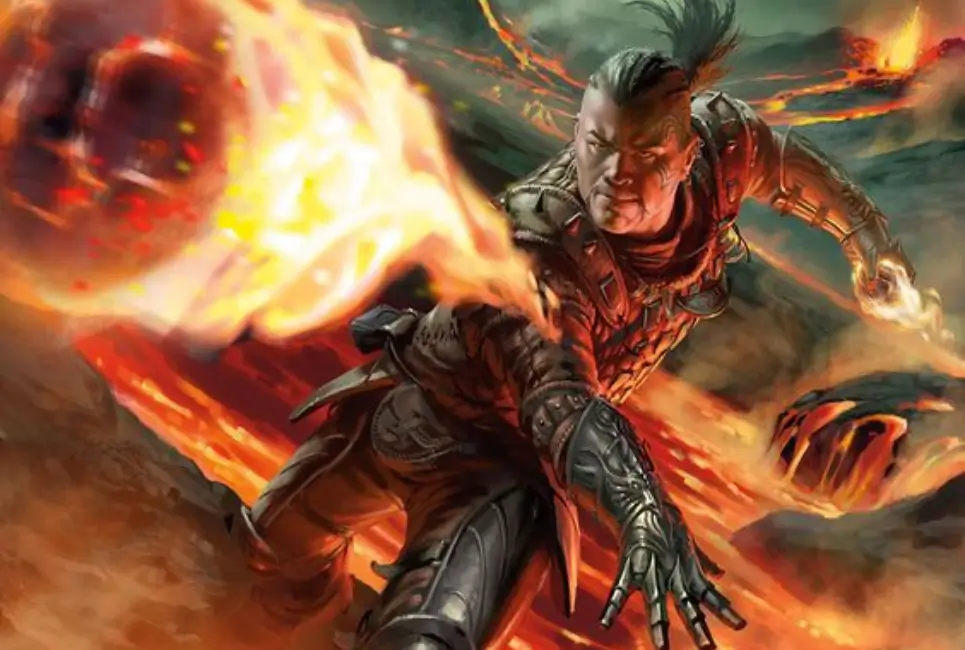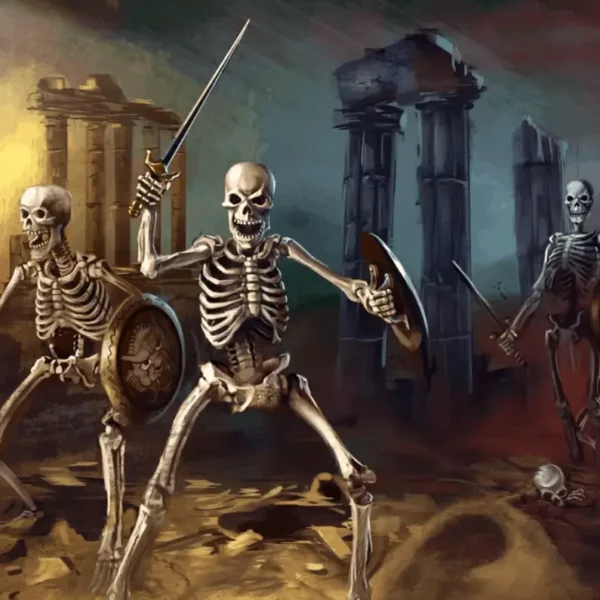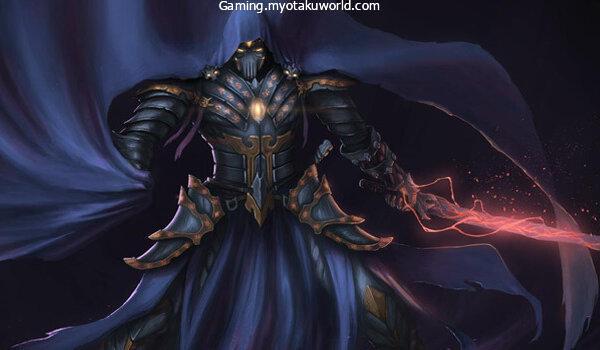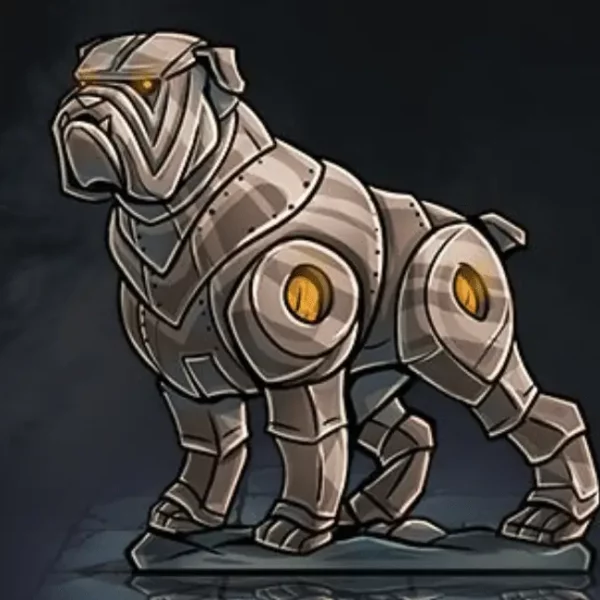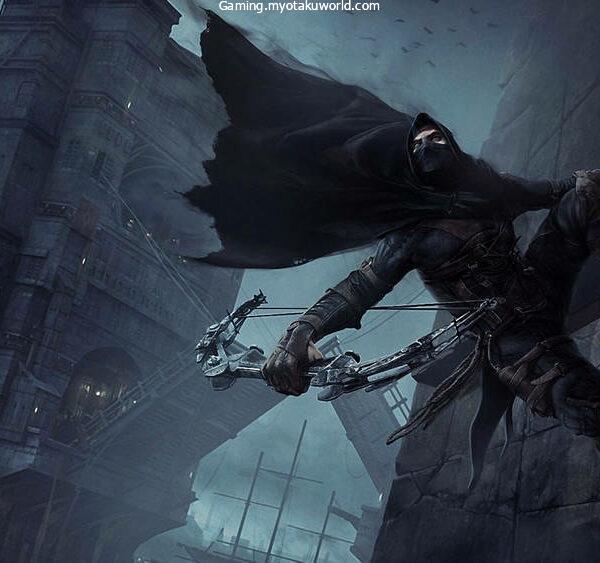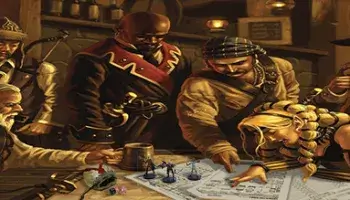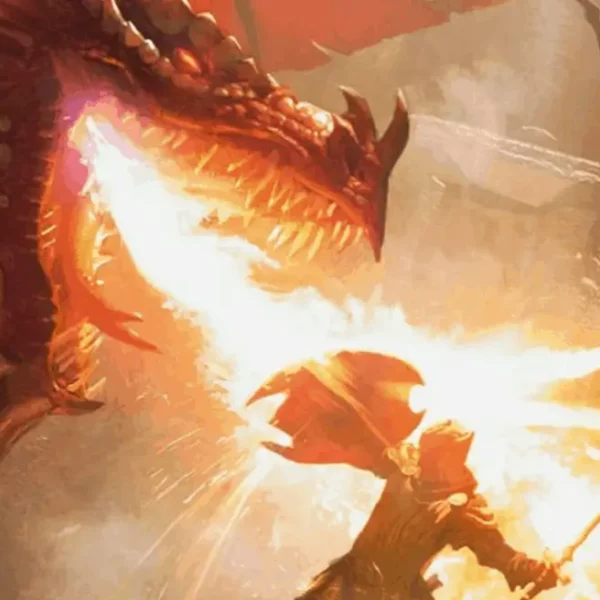Your parents or other adults may have told you not to play with fire. You shouldn’t, of course! Fire is very dangerous. With the right tools and conditions, a small ember can spread to an entire house.
It is a dangerous tool that people have used since they were smart enough to figure it out. But does this rule still hold in the D&D world? As a DM, I’d say, “Sure, you can try!”
If the child in you wants to set some bad people on fire, you can let it out in D&D. There are many spells you can use to get what you want.
Yet, Fire Bolt stands out as something that a spellcaster can do without using up a spell slot. If the world in your campaign doesn’t have guns, Fire Bolt can do the job, though it uses a lot more fire and a lot less gunpowder.
Is the bad guy hanging from a tree? Use Fire Bolt to burn them! Are the bad guy’s shields and weapons made of wood?
Use Fire Bolt to burn them! Is the bad guy wearing paper armour that their mom made for them out of origami?
Use Fire Bolt to burn them!
Okay, the last one might be too much, but this Fire Bolt 5e guide will show you how to learn Fire Bolt in a fun way if you want to.
- What does Fire Bolt mean in D&D 5e?
- How to use Fire Bolt in D&D 5e?
- How does Fire Bolt work in D&D 5e?
- Example of how Fire Bolt can be used in D&D 5e
- Who can cast Fire Bolt in D&D 5e?
- Classes that can cast Fire Bolt in D&D 5e
- Fire Bolt can be cast by certain subclasses in D&D 5e.
- Races that can cast Fire Bolt in D&D 5e
- Backgrounds in D&D 5e that can use the Fire Bolt spell
- Creative and valuable ways to use Fire Bolt in D&D 5e
- Triggering traps using Fire Bolt in D&D 5e
- Igniting explosives using Fire Bolt in D&D 5e
- Making distractions and signals using Fire Bolt in D&D 5e
- Burning buildings and areas using Fire Bolt in D&D 5e
- Lighting up dark places using Fire Bolt in D&D 5e
- FAQs
What does Fire Bolt mean in D&D 5e?
You can find the Fire Bolt evocation cantrip spell on page 242 of the Player’s Handbook. Cantrips are spells that don’t need spell slots, and evocation magic is about using energy and sending it to a target.
In a way, it can make energy-based weapons appear out of thin air. Here are the most important parts of the Fire Bolt spell.
- Fire Bolt
- Cantrip, evocation
- Casting Time: 1 action
- Range: 120 ft.
- Components: V, S
- Duration: Instantaneous
If you want to know more about how to use Fire Bolt and how it works, read the other sections below, where I describe them in more detail.
How to use Fire Bolt in D&D 5e?
Like other spells, Fire Bolt has a set of rules you must follow before you can use it on other people. So, slow down with the hot trigger finger and read my other article, Scorching Ray 5e Guide, to learn more about them.
In the section of the article called “How to use,” I list the things you need. These two spells are almost the same, and so are the main parts of them.
Scorching Ray and Fire Bolt are evocation spells that need both physical and verbal parts. They have the same range, duration, and casting time. The only difference between the two is that Scorching Ray is a lot stronger than Fire Bolt.
So it takes up a slot for a level two spell. Fire Bolt does not take up a spell slot because it is a cantrip. You can use it whenever you want, but you have to do something to make it work in combat.
After making sure you meet the requirements for Fire Bolt and can spit fire out of your hands, you can do the steps below.
- Choose an enemy within 120 feet of you to hit with your Fire Bolt: If you are in a battle and each square grid on the battlefield is five feet, that would be 60 square grids away from you.
- For a ranged spell attack, roll a die with 20 sides: If your target is too close to you, say five feet away, your attack will be weaker. So, roll two dice and pick the lower number.
- Add your spell attack modifier to the results: Different classes have different spell attack modifiers, which I’ll explain later. It is mostly made up of your ability to cast spells and your proficiency bonus.
And just like that, the Fire Bolt heads towards your opponent. But it’s still not clear if it will hit its mark or not. To find out if your Fire Bolt burned your enemy to a crisp, read on as I describe how it works after it leaves your fingers.
How does Fire Bolt work in D&D 5e?
A creature you choose gets hit by a hot streak of fire. The DM and the player must do the following to find out if the Fire Bolt hits its target and how much damage it does:
- Armor Class of the target and the attack roll: When you add everything up, the total must be equal to or higher than the Armor Class (AC) of your target for Fire Bolt to hit. If not, the target doesn’t get hit by the Fire Bolt.
- Roll a d10 (or more) to figure out how much damage a hit does: If you’ve reached level 5, Fire Bolt does 2d10 damage (i.e., two 10-sided dice). At level 11, it changes to 3d10, and at level 17, it changes to 4d10.
- The damage done to the target is subtracted from his HP: Hit Points, also called HP, are a way to measure how much life force a character has.
Fire Bolt is an easy spell to learn and get the hang of. You choose a target, roll to see if your attack hits it, and figure out how much damage it did.
But Fire Bolt may still be hard to understand. But you don’t have to worry because I’ll show you how the spell could be used.
Example of how Fire Bolt can be used in D&D 5e
We’re back at Arthur’s D&D Lab, and this time we’re going to try out the Fire Bolt. Half-elf Wizard Marshal knows how to use this spell and is ready to shoot fire at someone who doesn’t expect it.
Ricky, a goblin, is on the other side of the room. We “invited” him to join us. He was very happy to help with science today. Here are some important facts about these two people.
Marshal the Half-elf Wizard
- Intelligence Modifier: +3
- Proficiency Bonus: +2
Ricky the Goblin
- Hit Points: 9
- Armor Class: 15
Marshal’s turn comes up, and he uses Fire Bolt on Ricky. Fire Bolt has a range of 120 feet, and since Ricky is only 25 feet away from Marshal, it can hit him. Here’s a picture that shows how far away he is from the Wizard.
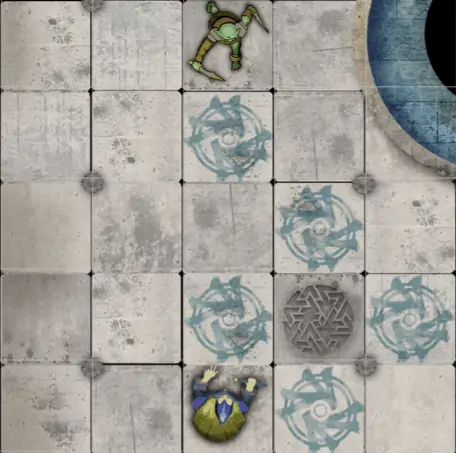
For Marshal’s ranged spell attack, I roll a d20 and get a ten. After that, I add this number to my spell attack modifier, my ability to cast spells, and my proficiency bonus.
So, I add the ten to my Intelligence skill, which gives me a +3 bonus, and my proficiency bonus, which gives me a +2 bonus. This equation can be written as follows:
- Ranged Spell Attack: D20 + (spellcasting ability + proficiency bonus)
- Marshal’s Ranged Spell Attack: 10 + (3 + 2)
When I add everything up, I get 15. Ricky is hit by the Fire Bolt because his Armor Class is 15. I roll a d10 and get an eight to figure out the damage. So, Ricky’s HP turns into one (nine minus eight). The next person is Ricky.
He goes up to Marshal and uses his sword to try to attack him. But because his health is low, he misses his chance. Now it’s Marshal’s turn, and he’ll use Fire Bolt on Ricky once more.

But because Ricky is five feet away, he has a disadvantage when he uses his spell attack from a distance. I roll two dice and get 19 and 6. When an attack is at a disadvantage, you have to pick the worst result. So, I choose 6.
When I add my ability to cast spells (+3) and my proficiency bonus (+2) to the number 6, I get an 11. This is not enough to hit Ricky. So, this Fire Bolt doesn’t hit Ricky, and I don’t roll to figure out how much damage it does.
Who can cast Fire Bolt in D&D 5e?
Artificers, Sorcerers, and Wizards can cast Fire Bolt, as can three subclasses (Arcana Cleric, Arcane Trickster Rogue, and Eldritch Knight Fighter), two races (High Elf and Half-elf with Moon Elf or Sun Elf Descent variant), and three backgrounds (Boros Legionnaire, Gruul Anarch, Rakdos Cultist).
Classes that can cast Fire Bolt in D&D 5e
If they have the Fire Bolt spell in their magic arsenal, Artificers, Sorcerers, and Wizards can shoot fire from their fingertips. Because Fire Bolt is a cantrip, anyone can use it as soon as they know it, even at level 1.
Here are some important things to know about these three D&D classes, like their spell attack modifiers.
| Classes that can cast Fire Bolt | Source | Spell attack modifier |
| Artificer | Tasha’s Cauldron of Everything, page 9 | Your proficiency bonus + your Intelligence modifier |
| Sorcerer | Player’s Handbook, page 99 | Your proficiency bonus + your Charisma modifier |
| Wizard | Player’s Handbook, page 112 | Your proficiency bonus + your Intelligence modifier |
Fire Bolt can be cast by certain subclasses in D&D 5e.
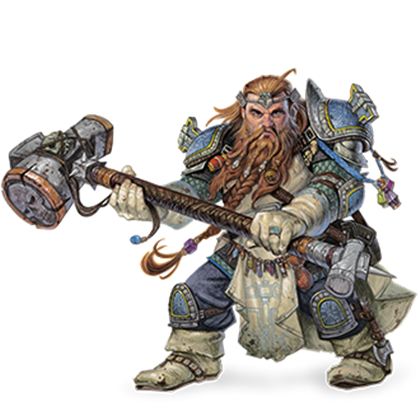
Only the Arcane Cleric, the Arcane Trickster Rogue, and the Eldritch Knight Fighter can use the Fire Bolt spell.
If you want to use Unearthed Arcana, the Giant Soul Sorcerer (Fire Giant) can also have Fire Bolt as one of their spells by default.
Their spell save DC would be the same as a Sorcerer’s, which is the proficiency bonus plus the Charisma modifier.
| Subclasses that can cast Fire Bolt | Originating Class | Subclass Source | Class Source | Spell attack modifier |
| Arcana Domain | Cleric | Sword Coast Adventurer’s Guide, page 125 | Player’s Handbook, page 56 | Your proficiency bonus + your Wisdom modifier |
| Arcane Trickster | Rogue | Player’s Handbook, page 97 | Player’s Handbook, page 94 | Your proficiency bonus + your Intelligence modifier |
| Eldritch Knight | Fighter | Player’s Handbook, page 74 | Player’s Handbook, page 70 | Your proficiency bonus + your Intelligence modifier |
Due to the Arcane Initiate subclass feature, clerics in the Arcana Domain can use the Fire Bolt as part of their cantrips. They can choose any two cantrips from the list of Wizard spells.
The Fire Bolt can also be used by the Arcane Trickster Rogue and the Eldritch Knight Fighter, thanks to their Spellcasting subclass features.
Like Clerics in the Arcana Domain, they can choose two cantrips from the Wizard spell list to add to their list of spells.
Races that can cast Fire Bolt in D&D 5e
Fire Bolt is a spell that can be used by High Elves and Half-Elves who have Moon Elf or Sun Elf Descent. These D&D races can learn one cantrip spell from the list of Wizard spells.
Their spell attack modifier would be their Intelligence modifier plus their Proficiency bonus. If you want to learn more about these classes, the places where you can find out more are listed below.
| Races that can cast Fire Bolt | Source | Spell Attack Modifier |
| High Elf | Player’s Handbook, page 23 | Your proficiency bonus + your Intelligence modifier |
| Half-elf (Moon Elf or Sun Elf Descent) | Sword Coast Adventurer’s Guide, page 116 | Your proficiency bonus + your Intelligence modifier |
Backgrounds in D&D 5e that can use the Fire Bolt spell

Surprisingly, some backgrounds can give a character the Fire Bolt cantrip as long as the character can cast spells. The Boros Legionnaire, Gruul Anarchist, and Rakdos Cultist are the names of these backgrounds.
The Guildmaster’s Guide to Ravnica is where they came from. So, these backgrounds would make sense in a campaign that takes place in that kind of place.
The sources for each background and other important information are listed below. Again, your character needs to be able to cast spells for this feature to work.
A Paladin with the Gruul Anarch background, for example, can cast Fire Bolt. Still, a Barbarian whose background is Rakdos Cultist can’t.
- Boros Legionnaire: Guildmaster’s Guide to Ravnica, page 40
- Gruul Anarch: Guildmaster’s Guide to Ravnica, page 60
- Rakdos Cultist: Guildmaster’s Guide to Ravnica, page 79
Creative and valuable ways to use Fire Bolt in D&D 5e
Even though Fire Bolt is a cantrip, it has many useful uses. It is so versatile that you can use it in many ways, like to trap an enemy or do a lot of damage, among other things.
In this section, I’ll show you that it’s more than just a weapon we use against enemies far away. Here are some unique and useful ways to use the D&D 5e spell Fire Bolt.
- Triggering traps.
- Igniting explosives.
- Making distractions and signals.
- Burning buildings and areas.
- Lighting up dark places.
Triggering traps using Fire Bolt in D&D 5e
Many traps in dungeons are set off by flammable objects, like a piece of string attached to a mechanism that, when tripped or broken, drops poison from the ceiling.
Another example is a rope that, when cut, sends a storm of arrows in a certain direction. If you see something that looks like it could be a trap, it’s best not to try it out for yourself.
You can use Fire Bolt when you need to set off dangerous traps so you can move on to the next area without putting anyone else in danger.
The cantrip has a very long range, so if you can, you and your team should stand 120 feet away to avoid getting hurt. Also, since it’s a cantrip, you wouldn’t put yourself at a disadvantage by using a spell slot for something so simple.
You can use the same reasoning for traps you set up yourself. You want to set a trap at the beginning of a hallway where you know your enemies will go.
You can set up your trap so that it can be set off by fire, like by burning a rope that is part of the trap. When you shoot it, you can stay far away, and if something goes wrong with the trap, it’s easy to get away.
Igniting explosives using Fire Bolt in D&D 5e

Explosives are useful tools to have on hand. Of course, you shouldn’t keep them too close to you, because if a fire starts, they could catch fire.
At the same time, they are dangerous and useful. If you want to break through something like a wall or a bank (I don’t know what your group is up to, so I won’t judge), explosives would be a good choice.
For an explosion to happen, you need fire to set it off. This is where Fire Bolt comes in handy. Due to the cantrip’s long range, you can blow things up right away and stay safe.
When used at the right time, a single Fire Bolt aimed at an explosive can kill a lot of enemies. In theory, this cantrip could do a lot of damage to a lot of things in the same area.
You can also fire Fire Bolt at places you think have bombs. Are the walls wired with dynamite, ready to blow up at the right time and kill everyone?
Stand back and let the flames from your fingers fly towards the wall. If your guesses are right, the wall will blow up when you are far away, so you and your party won’t have to worry about dying.
Making distractions and signals using Fire Bolt in D&D 5e
You and your group are hiding from the enemies, who are looking in every nook and cranny to find you. They are almost to where you are hiding, and chaos could start at any time.
You see a tree a few miles away and decide to send a Fire Bolt in its direction. The tree goes up in flames quickly, and now everyone is looking at the burning tree.
As your enemies look around, you make your way away. Congratulations, you just used Fire Bolt to make a distraction to avoid a deadly fight.
Fire Bolt can burn everything nearby that can catch fire, like a tree or an abandoned house with a thatched roof. Most of the time, fire doesn’t happen on its own, so enemies will likely look at the sudden event.
You can also use Fire Bolt to tell your allies to do something or to let someone know you are in an area. You might be stuck between rocks like in the movie “127 Hours,” and you need help right away.
Any nearby person will notice if you throw a Fire Bolt at a patch of grass or a tree. You just have to hope that the people coming towards you are friendly.
Let’s say you are planning a surprise attack and waiting for the right time to strike. An army of ready-to-fight soldiers is waiting for you to give them the word.
As soon as you see a gap in the enemy’s line, you set a nearby building on fire. When your signal is clear, the soldiers start to attack. Fire Bolt can get the attention of both your friends and your enemies.
Burning buildings and areas using Fire Bolt in D&D 5e
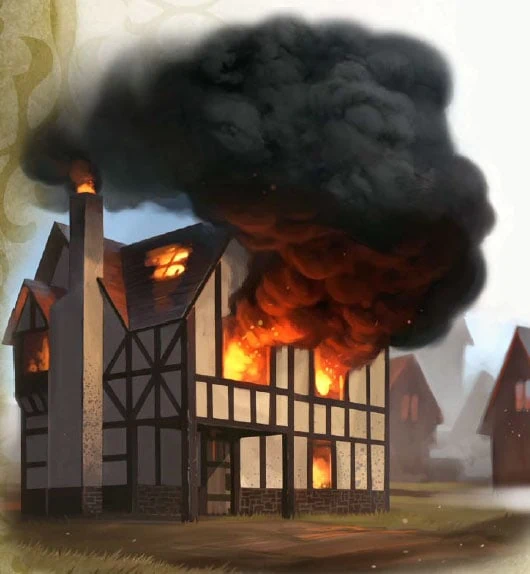
Most of the time when you play D&D, you are in a mediaeval world where wizards and dragons live. In those days, many buildings are likely to be very easy to burn down.
Most of the time, peasants can’t afford stone, so they build their homes out of wood and hay. The boats in enemy camps are all made of wood and look the same. Fire Bolt can mess up things in many different ways.
If all of your enemies are hiding in a single wooden house, you can kill them all with Fire Bolt by spraying flames from your fingers.
If your enemies are in a field of corn and you are a heartless monster who doesn’t care about the farmers in the area, you can set it on fire and watch your enemies burn while they try to get out of the smoke and choke.
You would have to be careful, though, so that your Fire Bolt didn’t hurt you or your friends. If you let out a Fire Bolt in a house that can catch fire, you should make sure it doesn’t hit anything unless you want to roast the adventurers.
You should also be careful about how you use flames inside buildings if you don’t have a spell that lets you control them.
Lighting up dark places using Fire Bolt in D&D 5e
Vision is a vital part of life, and it’s especially important when you’re going on an adventure. There may be places where there is darkness everywhere.
If you don’t have the ability to see in the dark like elves do, you will have to go in blind. Even if you don’t believe it, chandeliers do not always hang from the ceiling of dungeons. So, when you go on an adventure, you may see a lot of darkness.
Fire Bolt can help you if you need light. If you have a torch, candle, lamp, or anything else that can catch fire nearby, you can use your fingers to make a line of fire that will light up your surroundings.
Fire Bolt is like having a matchstick in your hand at all times. Fire Bolt makes it easy to light up places, which helps you see where you’re going.
A light could even spell out the word “life” or “death.” Imagine being lost in the dark without any way to find your way.
All of a sudden, it feels like you’re walking on air, and you look down and see that you’re about to fall off a cliff. You can avoid these problems if you use Fire Bolt to light a torch or candle.
FAQs
Can I use Fire Bolt underwater in D&D 5e?
Yes, you can use Fire Bolt while being underwater in D&D 5e. Magic doesn’t always follow the rules of physics. Because of this, someone can use Fire Bolt while they are underwater. It can hurt its target if it hits it. Still, it is unlikely that a Fire Bolt hit underwater will cause flammable things to catch fire. Most likely, the water will put out the fires caused by the Fire Bolt right away.
Is Fire Bolt a cantrip in D&D 5e?
Yes, the Fire Bolt spell in D&D 5e is a cantrip. This means that you can use it whenever you want without using a spell slot. Fire Bolt costs one action to use in battle. When a trigger is set off, a spellcaster can prepare this cantrip.
How much damage does Fire Bolt do in D&D 5e?
If Fire Bolt hits an enemy or an object, it can do 1d10 fire damage. But as your level goes up, the damage gets worse. Let’s say you’ve reached level 5. Its fire damage goes up by 2d10 points. When you reach level 11, its damage goes up by 3d10, and when you reach level 17, it goes up by 4d10.
